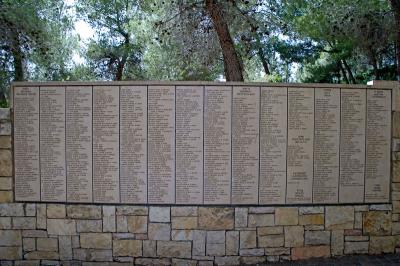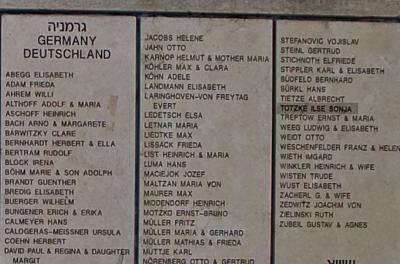Rescue in Würzburg
Ilse Sonja Totzke was born in 1913, in Strasbourg, the capital of the then German territory of Alsace-Lorraine. Her mother was an actress and her father was a theater orchestra director. In 1932, she went to Würzburg to study music at the local conservatory where she made several Jewish acquaintances and friends. She continued to associate freely with Jews even after the Nazis rose to power in 1933; she lodged at Jewish landlords’ and visited Jewish homes, generally disregarding the racial and social divide that the new regime strove to erect between Aryans and non-Aryans.
After the passage of the Nuremberg Laws, Totzke became the target of repeated denunciations to the Gestapo on account of her alleged friendliness to Jews and lack of patriotism. However, the Würzburg Gestapo office, which subjected her to surveillance, could not arrive at any conclusive findings until long after the outbreak of war. On October 28, 1941, Totzke was again summoned to the Gestapo and sternly warned to cease associating with Jews. She was made to sign a declaration to the effect that a repetition of the offense would result in her immediate consignment to a concentration camp. The unreformed Totzke was not willing to desist.
In September 1942, on one of her trips to Berlin, she was asked by Mrs. Strauss, the Catholic-born wife of a Würzburg Jew, to pass a message to her son through Posen-born Ruth Basinski. Strauss’s son and Basinski had both been students at the Academy for the Science of Judaism in Berlin. On arrival in Berlin, Totzke called on the young Basinski, befriended her, and spent at least one night at her apartment. A few months later, in December 1942, receiving a renewed summons to the Würzburg Gestapo, she apparently conceived the idea of using her Jewish connection to disappear underground. She returned to Berlin where she made several unsuccessful attempts to meet Basinski at her apartment.
When she returned on February 8, 1943, she was told by the neighbors that the Jewish woman was probably at the Judenlager (Jewish camp) on Auguststrasse, pending her deportation to the East. The next morning Totzke went to Auguststrasse and waited patiently until 3:00 PM when Basinski finally showed up. At this point Totzke had already made up her mind to flee abroad with her Jewish friend in order to protect her from deportation. However, it took several more days of convincing before she could prevail upon the reluctant Basinski to go along with the plan.
On February 12 or 13, the two women finally set out on a long and tortuous journey that eventually brought them to the Swiss border near Durmenach, They succeeded in crossing the border on the night of February 26-27, but were apprehended by Swiss customs guards who directed them back to the German border after questioning them. The following night they attempted to re-cross the Swiss border and were caught again. This time the Swiss customs guards handed them over to the to the German border police at St. Louis/Mulhouse. Basinski was sent to the Gestapo authorities in Berlin who later deported her to Auschwitz, while Totzke was returned to Würzburg for questioning. In the course of her hearing, she made the following statement:
"I have been considering fleeing Germany for quite some time as I do not feel well under Hitler's rule. In particular, I have found the Nuremberg Laws to be incomprehensible and this is also the reason why I continued to maintain contact with the Jews who were my acquaintances."
Now designated by her interrogators as incorrigible, on May 12, 1943, she was sent to the Ravensbrück concentration camp. She is recorded as having been liberated on April 26, 1945, but she was never located. Ruth Basinski, who as a gifted flutist, had been assigned to the prisoners orchestra in Auschwitz, survived the war.
On March 23, 1995, Yad Vashem recognized Ilse Sonja Totzke as Righteous Among the Nations.








